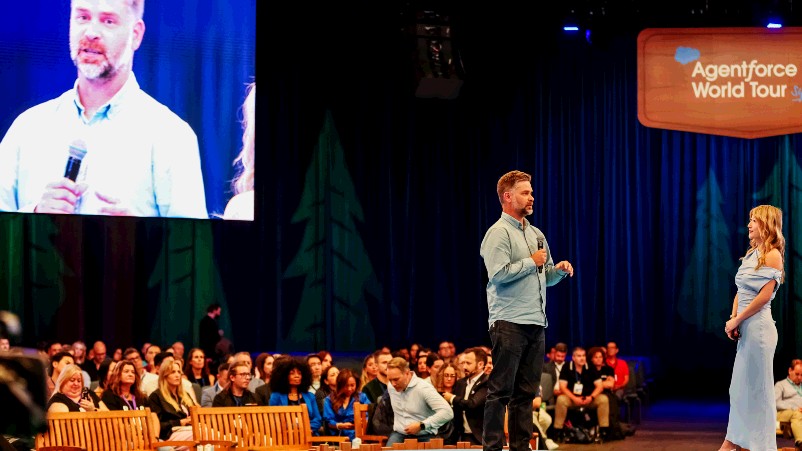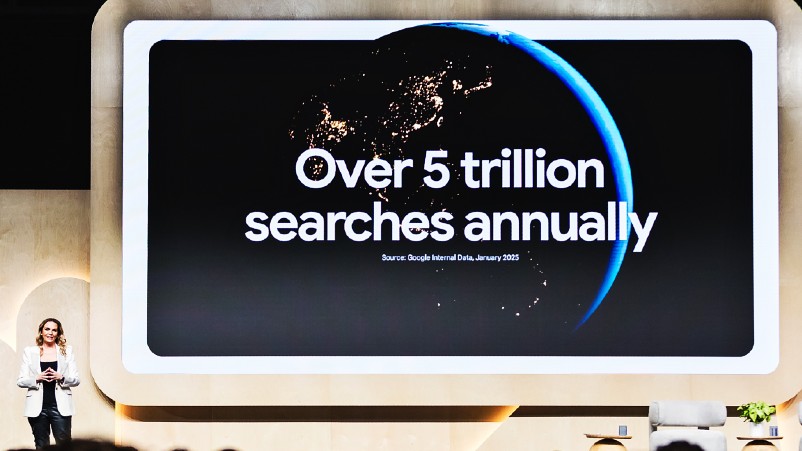Fisher & Paykel’s AI-powered CX shift: From manual segments to machine-led nudges

Fisher & Paykel is using AI to figure out when your fridge filter needs changing, then nudging you to subscribe before you even realise it. That’s not personalisation, says digital ops boss, Mark Henderson: It’s predictive experience. And it’s already led to 11,000 personalised recommendations, a 40 per cent lift in product views, and data segments that once took 100 hours now built in minutes. The shift is powered by Salesforce Data Cloud and machine learning. Henderson says the real unlock came from cultural buy-in—getting business leaders to trust the automation, and moving fast once they did.
What you need to know
-
After a decade-long data journey, Fisher & Paykel has entered a new phase of hyper-personalisation, driven by Salesforce Data Cloud, AI, and automation.
-
Since November, the brand has generated up to 20,000 automated product recommendations, scaling from manual segmentation to AI-led predictive nudges.
-
Legacy customer segmentation has been replaced with automated, real-time micro-segmentation, and order's of magnitude saving of manual work per segment.
-
Predictive messaging now alerts customers to service needs—like changing a fridge filter—boosting convenience and driving upsell opportunities.
-
Personalised product surfacing has delivered a 40% increase in product views for large appliances.
-
Success hinged not just on tech, but cultural alignment—building trust in AI and automation among internal teams and business partners.
-
Personalisation is treated as a live capability, with rapid iteration and optimisation replacing one-off campaign thinking.
We’ve only had this measurement in place since November—that's how fast it all happened. As of two weeks ago, we’d already shown 11,000 product recommendations to customers, and it's probably closer to 20,000 by now.
Fisher & Paykel has gone from personalisation to prediction, using AI to ping customers before their fridge filters expire, surfacing products they didn’t know they needed, and collapsing 100 hours of segmentation work into a single machine-learned moment. It’s not just a data transformation story; it’s a blueprint for how legacy manufacturers can move fast, scale smart, and make customer experience feel less like marketing—and more like service.
Late last year, Fisher & Paykel chief digital officer, Rudi Khoury told Mi3 the company was "very lucky” to have employees who are “passionate about getting the data right early on”. That's because, as AI deployments gather pace, Fisher & Paykel has been able to test, adapt and deploy fast from bots to co-pilots and now autonomous AI agents. The business has been “hot” on clean data for some time, Khoury said, underpinning its confidence in early trials that autonomous AI agents powered by Salesforce’s “reasoning engine” will ultimately solve “80-90 per cent” of the company’s customer contact volumes at much higher satisfaction levels than today.
In an update, Fisher & Paykel’s head of digital operations and customer data, Mark Henderson, told attendees at Salesforce AgentForce in Sydney last month that the company’s decade-long data transformation has reached a new phase where AI, machine learning and automation are reshaping personalisation, scaling segmentation and lifting product engagement.
“We’ve only had this measurement in place since November—that's how fast it all happened,” Henderson said. “As of two weeks ago, we’d already shown 11,000 product recommendations to customers, and it's probably closer to 20,000 by now.”
The acceleration is underpinned by Salesforce Data Cloud and automation, but it's also the result of deep cultural alignment, internal and external.
“We’ve achieved this by enhancing our recommendation model and introducing automation, allowing us to scale personalisation much more efficiently,” said Henderson.
From segments to signals
Fisher & Paykel began its customer data journey over a decade ago, with the central aim of aligning product thinking with customer understanding. “It started when we first brought in Salesforce CRM to centralise customer data in one place,” Henderson said. “Since then, we've built a robust customer data model that we’ve continued to evolve.”
This model now integrates data across connected appliances, D2C operations and multiple regional sales frameworks. That holistic view has been the springboard for increasingly sophisticated personalisation efforts, he suggested
“We initially implemented a CDP, which we then upgraded to Data Cloud, allowing us to keep all customer data in one place,” continued Henderson. “That enabled us to start leveraging data for basic personalisation: We could recognise what customers had purchased and tailor communications accordingly. For example, personalising emails and interactions to create a more premium, luxury brand experience.”
But while early efforts relied heavily on manual labour, the new approach is automated, data-driven and dynamic.
“We didn’t start from ground zero—we already had a level of personalisation in place. We were working with predefined segments ranging from 50 to 1000 people,” Henderson explained.
Henderson said the team can now analyse data to better understand what offers made sense. It was possible previously, but it required a lot of manual effort and resources to get it right. According to Henderson, the team has now reached a point where they can automatically generate data segments, saving hundreds of hours of work.
That means Fisher & Paykel can tailor now tailor its messaging more precisely—by better understanding what customers have viewed, how they’ve interacted with the brand, and nudging customers along their journey where it makes sense for the business. Henderson pointed to one example that neatly captures the new capability: Proactive service linked to appliance usage patterns.
“Earlier today, for instance, we demonstrated how we can predict when a fridge filter needs changing and proactively send a message to the customer: ‘Here’s the filter you need. Do you want to subscribe so you never have to worry about it?’ It just shows up,” he said. “This is how we’re driving proactive, predictive, and personalised service.”
And it’s working. “For customers purchasing larger appliances, we’ve improved the journey by surfacing products they might not have considered. As a result, we’ve seen a 40 per cent increase in product views across our key categories.”
Scaling tech - and trust
While the shift to automation has been technologically enabled, Henderson said human factors were just as important.
“We’ve spent a long time establishing new capabilities, and while AI has been part of that journey, the key has been working closely with our business partners and stakeholders,” he said. “We made a conscious effort to bring them along on the journey, building trust—especially around automation and AI, where trust can often be a concern.”
That trust helped unlock the speed of rollout. “It was important that when we were ready to launch, they trusted the process and believed in the results.”
Deployment also hinged on preparedness. “We also made sure we had dedicated resources in place for the rollout. Working with Salesforce Services was a big help—they were highly engaged and enabled us to move quickly. At the same time, we ensured our internal teams were ready to go, with no delays. Everyone knew their role and could execute confidently.”
Henderson’s team has treated personalisation as a living capability, not a one-time launch.
“This approach allowed us to deploy and test quickly. We could iterate in real time, learning from what the data was telling us. When it came to recommendations, we focused on continuous optimisation—treating it as an ongoing evolution rather than a one-off launch,” he added.








